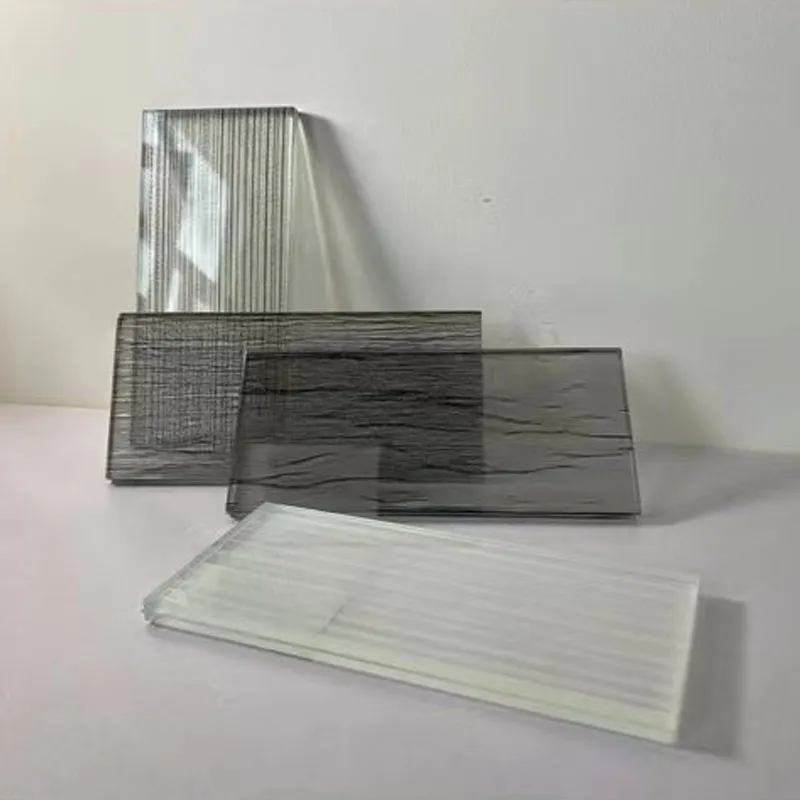Types of Glass Used in Architecture
Glass is an integral component of modern architectural design, offering aesthetic appeal, functionality, and versatility. The evolution of glass technology has enabled architects to utilize various types of glass to enhance both the form and performance of their buildings. This article explores the different types of glass commonly used in architecture, highlighting their unique properties and applications.
1. Float Glass
Float glass is the most common type used in construction. It is produced by floating molten glass on top of molten tin, resulting in a smooth, flat surface. This type of glass is transparent and has a low distortion level, making it ideal for windows and facades. Float glass can be treated for various purposes, including annealing for thermal stability and polishing for clarity.
2. Tempered Glass
Tempered glass, also known as toughened glass, undergoes a process of extreme heating and rapid cooling to increase its strength. This makes it up to five times stronger than standard glass, allowing it to withstand high impacts and thermal stresses. Tempered glass is widely used in areas where safety is a concern, such as facades, glass doors, and shower enclosures. When shattered, it breaks into small, blunt pieces, minimizing the risk of injury.
3. Laminated Glass
Laminated glass consists of two or more layers of glass interlayered with a plastic resin, typically polyvinyl butyral (PVB). This type of glass provides enhanced safety and sound insulation. In case of breakage, the layers stay bonded together, reducing the likelihood of injury from sharp shards. Laminated glass is often used in skylights, bulletproof windows, and various architectural elements requiring additional protection.
types of glass used in architecture
4. Insulated Glass Units (IGUs)
Insulated glass units are designed to improve energy efficiency by combining two or more glass panes separated by a spacer filled with gas, typically argon or krypton. This setup reduces heat transfer, making IGUs a popular choice for commercial and residential buildings in energy-conscious designs. They also help in reducing noise levels and can have various coatings for improved solar control.
5. Low-E Glass
Low-emissivity (Low-E) glass has a thin metallic coating that reflects infrared energy while allowing visible light to pass through. This property enhances thermal performance, keeping interiors cooler in summer and warmer in winter. Low-E glass is widely used in energy-efficient buildings, as it significantly reduces heating and cooling costs, making it a sustainable choice for contemporary architecture.
6. Smart Glass
An emerging trend in architectural design is the use of smart glass, which can change its properties in response to environmental stimuli such as light or heat. This type of glass can switch from transparent to opaque or adjust its tint, providing enhanced comfort and privacy. Smart glass technology is increasingly being adopted in modern offices and homes, offering a futuristic solution to shading and insulation.
In conclusion, the diverse types of glass used in architecture each serve unique purposes. From enhancing aesthetics to improving energy efficiency and safety, glass continues to be a pivotal material in modern architectural design, shaping the way we build and interact with our environments.
 Afrikaans
Afrikaans  Albanian
Albanian  Amharic
Amharic  Arabic
Arabic  Armenian
Armenian  Azerbaijani
Azerbaijani  Basque
Basque  Belarusian
Belarusian  Bengali
Bengali  Bosnian
Bosnian  Bulgarian
Bulgarian  Catalan
Catalan  Cebuano
Cebuano  Corsican
Corsican  Croatian
Croatian  Czech
Czech  Danish
Danish  Dutch
Dutch  English
English  Esperanto
Esperanto  Estonian
Estonian  Finnish
Finnish  French
French  Frisian
Frisian  Galician
Galician  Georgian
Georgian  German
German  Greek
Greek  Gujarati
Gujarati  Haitian Creole
Haitian Creole  hausa
hausa  hawaiian
hawaiian  Hebrew
Hebrew  Hindi
Hindi  Miao
Miao  Hungarian
Hungarian  Icelandic
Icelandic  igbo
igbo  Indonesian
Indonesian  irish
irish  Italian
Italian  Japanese
Japanese  Javanese
Javanese  Kannada
Kannada  kazakh
kazakh  Khmer
Khmer  Rwandese
Rwandese  Korean
Korean  Kurdish
Kurdish  Kyrgyz
Kyrgyz  Lao
Lao  Latin
Latin  Latvian
Latvian  Lithuanian
Lithuanian  Luxembourgish
Luxembourgish  Macedonian
Macedonian  Malgashi
Malgashi  Malay
Malay  Malayalam
Malayalam  Maltese
Maltese  Maori
Maori  Marathi
Marathi  Mongolian
Mongolian  Myanmar
Myanmar  Nepali
Nepali  Norwegian
Norwegian  Norwegian
Norwegian  Occitan
Occitan  Pashto
Pashto  Persian
Persian  Polish
Polish  Portuguese
Portuguese  Punjabi
Punjabi  Romanian
Romanian  Russian
Russian  Samoan
Samoan  Scottish Gaelic
Scottish Gaelic  Serbian
Serbian  Sesotho
Sesotho  Shona
Shona  Sindhi
Sindhi  Sinhala
Sinhala  Slovak
Slovak  Slovenian
Slovenian  Somali
Somali  Spanish
Spanish  Sundanese
Sundanese  Swahili
Swahili  Swedish
Swedish  Tagalog
Tagalog  Tajik
Tajik  Tamil
Tamil  Tatar
Tatar  Telugu
Telugu  Thai
Thai  Turkish
Turkish  Turkmen
Turkmen  Ukrainian
Ukrainian  Urdu
Urdu  Uighur
Uighur  Uzbek
Uzbek  Vietnamese
Vietnamese  Welsh
Welsh  Bantu
Bantu  Yiddish
Yiddish  Yoruba
Yoruba  Zulu
Zulu 

